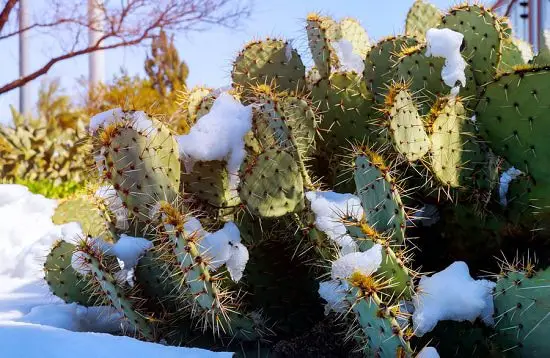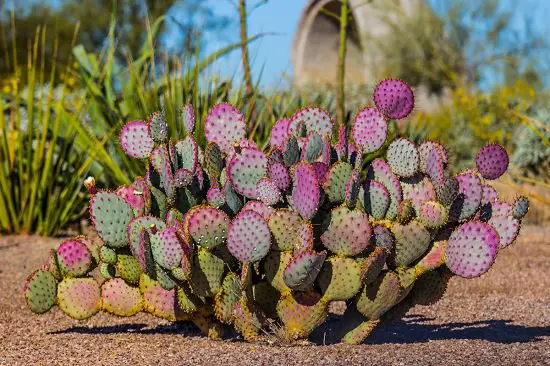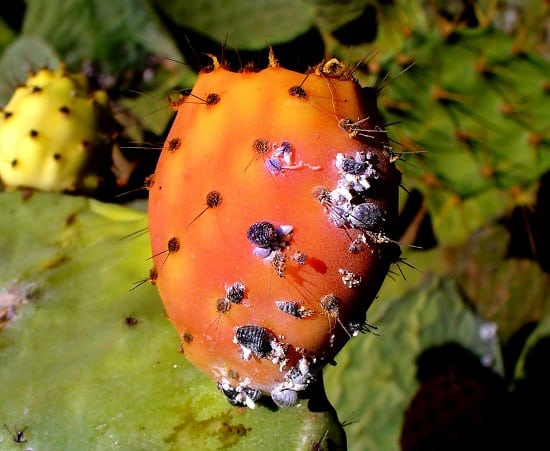Here are some exciting Prickly Pear Cactus Facts that are surely going to make you grow this amazing fleshy succulent at your place!
Prickly pear cactus or Opuntia are native to arid and semi-arid regions. They have a flat and rounded pad, with sharp spines over, known as Glochids. It grows extensively in Mexico, the United States, and South America. Here are some of the most amazing Prickly Pear Cactus Facts that you might not be aware of!
1. Great Cold-Hardy Plants

Although they belong to the arid and semi-arid regions, these are cold-hardy plants and can survive temperatures as low as -30F (-34C). Species like Opuntia fragilis can tolerate down to -35F (-37C), whereas Opuntia poryapantha can handle a minimum of -25F (-32C).
Also Read: How To Grow and Care for Prickly Pear Cactus
2. Work As Vegetables & Fruits, Both
Prickly Pear Cactus flowers during summer, which turn into edible, sweet fruits (Tuna). Fruits of Opuntia Ficus Indica are eaten raw or used in making jellies, candies, and drinks. Similarly, Prickly-pear like Opuntia fragilis is used as a vegetable.
3. Drought Tolerant Plant

Photosynthesis in Prickly Pear cactus takes place through CAM (Crassulacean acid metabolism). To prevent water loss, prickly pear cactus opens up its stomata during night time only, to absorb carbon dioxide. This CO2 stores in the form of malic acid in its vocules, and during the day, this acid breaks down to CO2, converting into sugar.
4. Greenish Flattened Parts Are Not Leaves
The flat and green parts, the ‘pads’ of the plant, are not leaves; they are, in fact, modified stems. These pads perform various functions like storing water, photosynthesis, and producing flowers. Whereas the sharp spines over these pads are leaves, which becomes harder with age.
5. Insects On Prickly Pears Are Used In Making Dyes

Small insects named Cochineal, found on the pads of prickly pear cactus, are collected from the surface of its pads and are used in the making of carmine dye, used in fabrics and cosmetics. They are also used for red food coloring and fruit juices like Ruby Red and
Grapefruit juice.
6. Healthy Fruits
Rich in vitamins, minerals, and antioxidants, fruits of prickly pear cactus help boost immunity, reduce cholesterol, and protecting the liver. The fruits also help in improving the digestive system and prevent the phenomenon of atherosclerosis.
7. Widespread Growth In Australia

Prickly Pear Cactus was introduced in Australia during the 19th century for agricultural fencing purposes and to establish cochineal dye industries. It soon became invasive, spreading over 40,000 km square area. Due to this, in Queensland, most of the cacti were banned for many years, especially the Prickly Pear cactus.
8. Good Pollinator Plants
It is also a great pollinator plant. Bees pollinate the flowers as they employ a unique trick of curling up when it comes in contact with anything, thanks to their thigmotactic stamens. This helps the insects to collect the pollen from the flowers.
9. Prickly Pear Seed Oil Has Many Benefits

The oil of Prickly pear cactus helps reduce dark circles and prevent wrinkle formation. However, it also finds usages as a natural hair conditioner, as it is rich in Vitamin E (It has three times higher Vitamin E than argan oil) and fatty acids (Linoleic acid).


